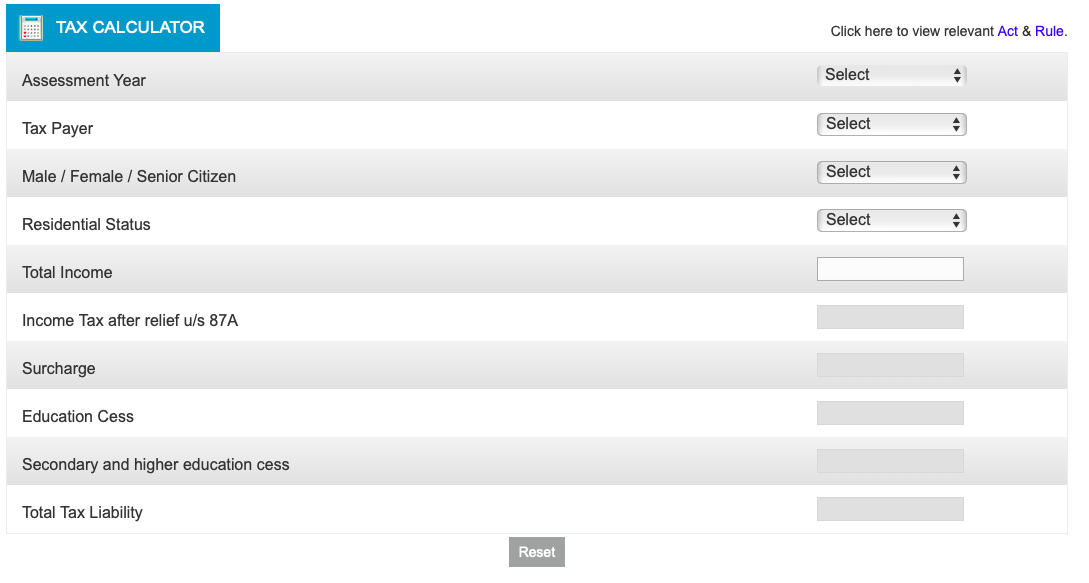This article is reviewed regularly by Wego’s editorial team to ensure that the content is up to date & accurate.
Updated January 2024
One of the major sources of revenue for the Indian government is income tax collection, so much so that it can be considered as its foundation. It is a fundamental duty of the citizens of India to file their taxes. But when it comes to Indian citizens residing outside the country, the task can be challenging as the rules and regulations are drastically different.
Read on as Wego lists out the intricacies of income tax rules applying to Non-Resident Indians (NRIs).
Table of Contents
NRI income tax
NRI, or a Non-Resident Indian, is a citizen of India who resides outside the country, primarily for business or employment reasons, but still maintains ties to their home country. These ties could be financial, cultural or family-related.
The income tax for NRIs depends on their residential status. According to Wego’s research, if you are an Indian resident, your global income is taxed based on Indian tax laws. However, if you are an NRI, your income earned or accrued in India will be subject to taxation based on Indian tax laws. Any income earned from sources outside India will not be taxable in India.
Additionally, NRIs have the option to hold two types of accounts: a Non-Resident External (NRE) account and a Non-Resident Ordinary (NRO) account. The NRE account is meant for transferring foreign earnings to India, while the NRO account is used to manage income generated within India by NRIs. Any interest earned on an NRE account is not taxable in India. On the other hand, if you earn interest on the funds in your NRO account, it will be subject to taxation.
It’s important to note that any income obtained from sources outside India will not be taxed in India.
NRI income tax calculator
The Government of India has provided an easy-to-use tool for taxpayers to calculate their tax liability. It is updated with the latest terms of both the new and old regimes. You can access the tax calculator from the official website.

Once you are on the page,
- you will be required to fill in details like assessment year, type of taxpayer, residential status etc.
- under residential status, you must select “Non-Resident”
- then, you can proceed to fill in the details of your income and applicable deductions
- the calculator will then provide you with your total tax liability based on the current NRI income tax laws.
NRI income tax slabs
Your tax liability is determined by the income you have generated, which is why the Indian government has tax slabs in place. These are common for both residents and non-residents. NRIs can opt for the old tax regime or the new tax regime with a lower rate of taxation (u/s 115BAC of the Income Tax Act).
| Old Tax Regime | New Tax Regime u/s 115BAC | ||
|---|---|---|---|
| Income Tax Slab | Income Tax Rate | Income Tax Slab | Income Tax Rate |
| Up to INR 2,50,000 | Nil | Up to INR 2,50,000 | Nil |
| INR 2,50,001 – INR 5,00,000 | 5% above INR 2,50,000 | INR 2,50,001 – INR 5,00,000 | 5% above INR 2,50,000 |
| INR 5,00,001 – INR 10,00,000 | INR 12,500 + 20% above INR 5,00,000 | INR 5,00,001 – INR 7,50,000 | INR 12,500 + 10% above INR 5,00,000 |
| Above INR 10,00,000 | INR 1,12,500 + 30% above INR 10,00,000 | INR 7,50,001 – INR 10,00,000 | INR 37,500 + 15% above INR 7,50,000 |
| INR 10,00,001 – INR 12,50,000 | INR 75,000 + 20% above INR 10,00,000 | ||
| INR 12,50,001 – INR 15,00,000 | INR 1,25,000 + 25% above INR 12,50,000 | ||
| Above INR 15,00,000 | INR 1,87,500 + 30% above INR 15,00,000 | ||
Note that while the rates in the new regime are lower, many deductions will not apply. It is thus advisable to do a thorough comparison of the tax liability in both cases before making a decision. It’s worth noting that the rates of surcharge and Health & Education cess remain the same under both tax regimes
NRI income tax return
Here are the steps to file your income tax return as an NRI:
- determine your residency status with respect to the particular financial year
- calculate your taxable income with respect to your gross income (income before tax) and apply all applicable deductions.
- claim DTAA (Double Tax Avoidance Agreement). It enables an NRI to avoid paying taxes twice on the same income. As per DTAA, an income may either be exempted from tax deduction in one country or taxed at a lower rate in the home country.
NRI income tax return form
The applicable forms for NRIs to file income tax returns depend on their sources of income and vary accordingly. Visit the official NRI tax filing website for the relevant forms and more details.
NRI income tax notice
A formal correspondence issued by the Indian tax authorities, including for NRIs, regarding tax-related matters is referred to as an income tax notice. These notices serve various purposes, such as collecting outstanding taxes, requesting additional information or clarifications about your tax filing, or notifying you of an assessment or reassessment of your income.
If you receive an income tax notice, you can respond to it through the official website. In most cases, you will need to upload the necessary documents, provide explanations, and address any queries raised in the notice online.
However, certain notices may require you to physically submit documents or appear in person before the tax authorities. It is important to comply with an income tax notice to avoid serious consequences, including penalties, fines, and legal actions.













